Architecture is treated as one of the most creative human activities close to the creativity of the gods. Architects were responsible for the beautification of the Earth and erecting solid, attractive and useful buildings. Nevertheless, it becomes more and more obvious that construction is an aggressive business: it pollutes the environment, exhausts natural resources and contributes to the greenhouse effect. Everything built in the 20th century far surpassed all that had been built throughout history. Many of those structures have nothing to do with beauty and even with function. Monotonous concrete blocks form ugly scars on the planet’s surface and, unfortunately, some of them will outlive their use. Acres of man-made landscapes all over the world look disgusting and cry for revitalization. They desperately need healing and parks often become the cure.
In the past few decades, parks have become a kind of new urban religion. They make cities more liveable, the air fresher and people happier. They bring nature into the built environment, are home to wildlife, encourage communication and also diminish social tensions and crime.
Any park contributes to these aspects, but some parks bring additional advantages like healing urban wounds. They are set up at places of long-abandoned sites, which had lost their value years ago, replace irretrievably lost urban functions with new ones and give the exhausted land a second chance.
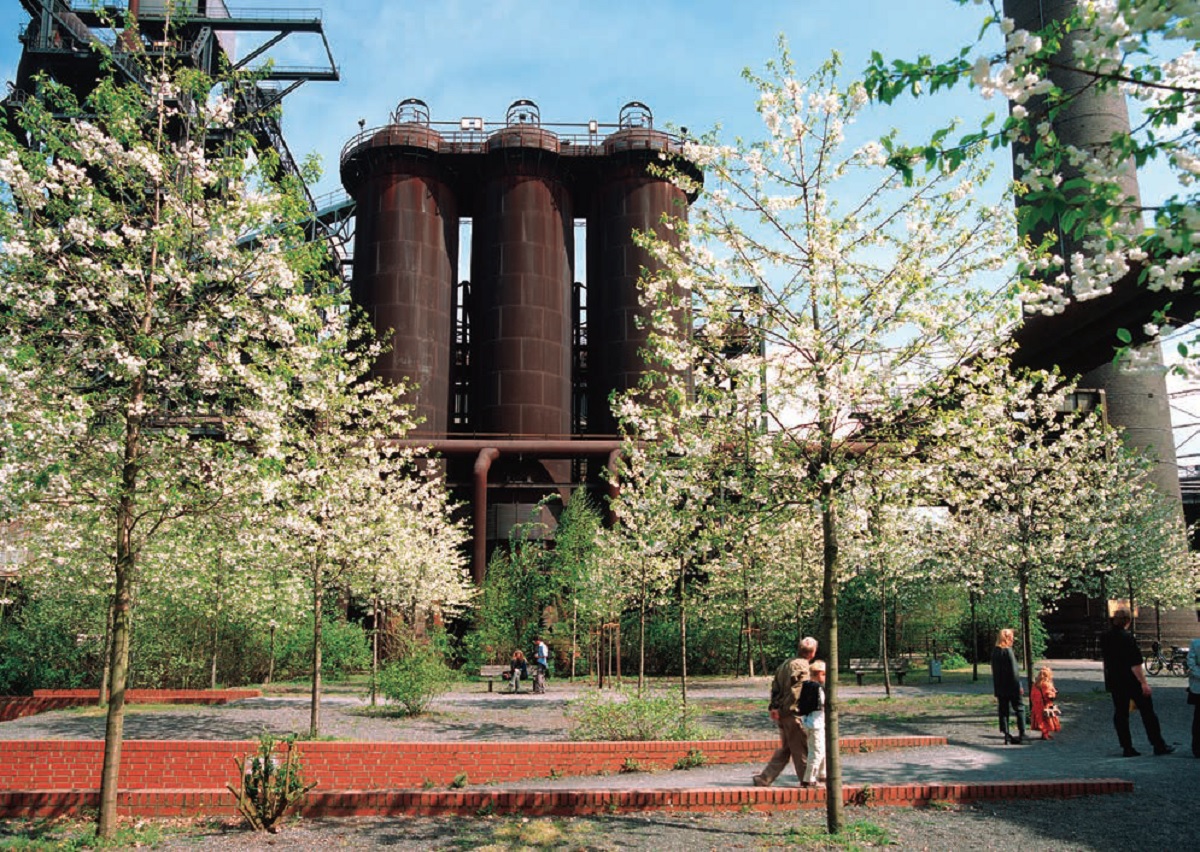
Photo: Christa Panick
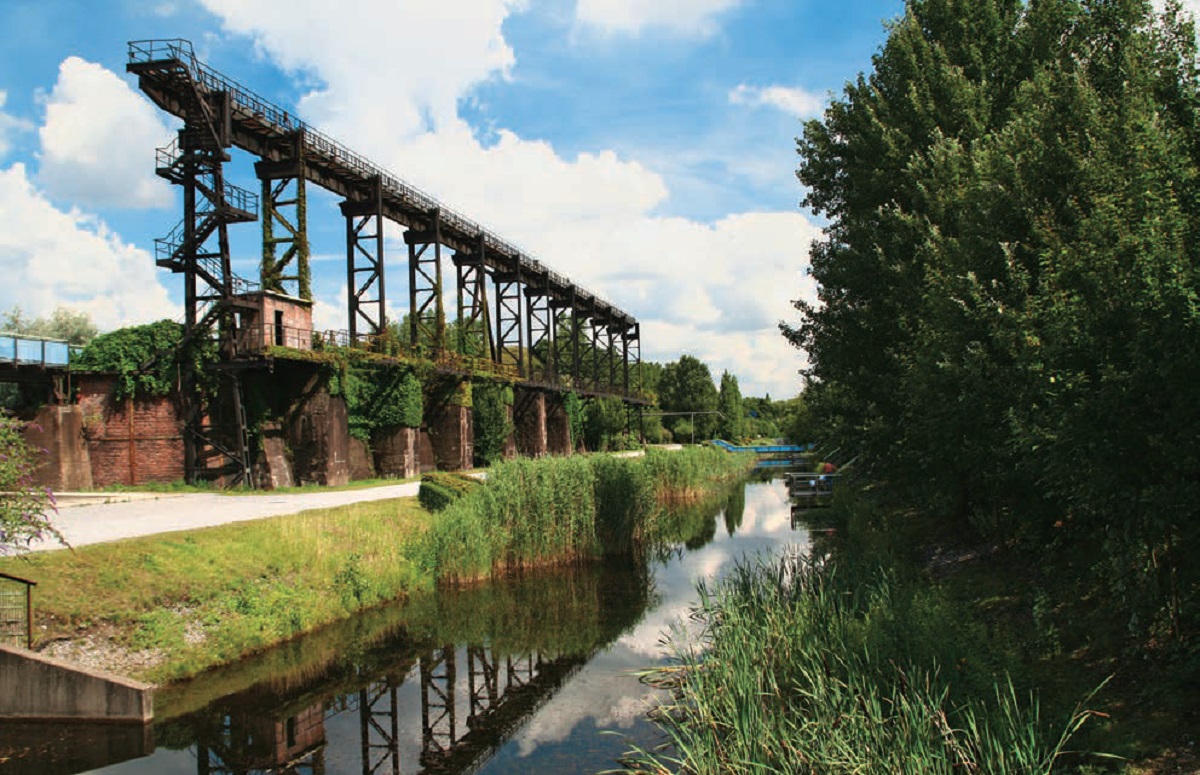
Photo: Latz + Partner
Parks instead of industry
Industry was one of the moving forces of Western cities and regions for almost two centuries. But a technological shift brought a decline in industries. The vast, walled sites of the factories remained blind spots in the fabric of the cities, inaccessible, unknown, polluted and dangerous. It took time to reach a new understanding of the potential of these territories and to find ways to revitalize them. It required multidisciplinary efforts by architects, city planners, landscape designers, engineers, ecologists, chemists and botanists to develop new holistic approaches.
Architect Peter Latz, based in Munich, was one of the pioneers of this movement. He was responsible for rethinking an extended industrial territory of the Ruhr valley – the largest urban agglomeration in Germany known for its coal mines and metal manufacturing plants. Latz’s most famous and awarded project is Duisburg Nord Landscape Park, a wonderful metamorphosis of the Thyssen-Meiderich Ironworks. He has carefully integrated the existing industrial patterns merging them into a new natural environment: the low-lying water park, fields of wild-looking vegetation, promenades and a railway park connecting parts of the town that had been separated for decades.
Only the most contaminated parts of the plant were destroyed, others remained as ancient land-art objects captured by nature. Monumental structures were re-interpreted in unexpected ways: the three-meter-thick walls of the Ore Bunker became the labyrinthine complex of artificial gardens with different microclimates, sound effects and various artistic interventions.
The Duisburg Nord Landscape Park took 12 years of planning and realization; its first phase was inaugurated in 1994. It is only now, 23 years later, that the structures planned by Latz have developed to their full spatial effect. Tilman Latz, Peter’s son and partner, comments on this experience:
“In Duisburg, the situation was the following: either we take the facilities down, recycle the material, decontaminate and create a completely new landscape, cleaned of everything, which could disturb people or any future use. Well, taking down and decontamination would have cost millions of Deutschmarks and the history of the site, which is a worker’s history, would have been erased. But the approach had no specific answer to the identity and culture of the Ruhr region, which was and still is a culture of hard industrial work, then a symbol of loss of work and pride, devastation and unemployment.
Peter’s concept allowed a respectful transformation and re-use of all spaces while being sustainable and adaptable to future needs. What was once the center of work and the focal point of the Duisburg-Nord, became the center of leisure and a focal point of Duisburg-Nord, without the destruction and neglect.
Talking about such sites, already altered and polluted by people, we should always keep in mind that many of them had been important for a city’s or region’s history, its wealth and self-confidence, that they have a value both ideally and economically and that they bear spaces, which are very often much more thrilling and richer than any other public space or normal park. They are quite often even richer in biodiversity. It is not so much about pollution (where we can always find a way to deal with it intelligently) and it is not so much about rust and noise, but much more about the ability to understand our urban environment as a global system, which is diverse, rich and stimulating.”
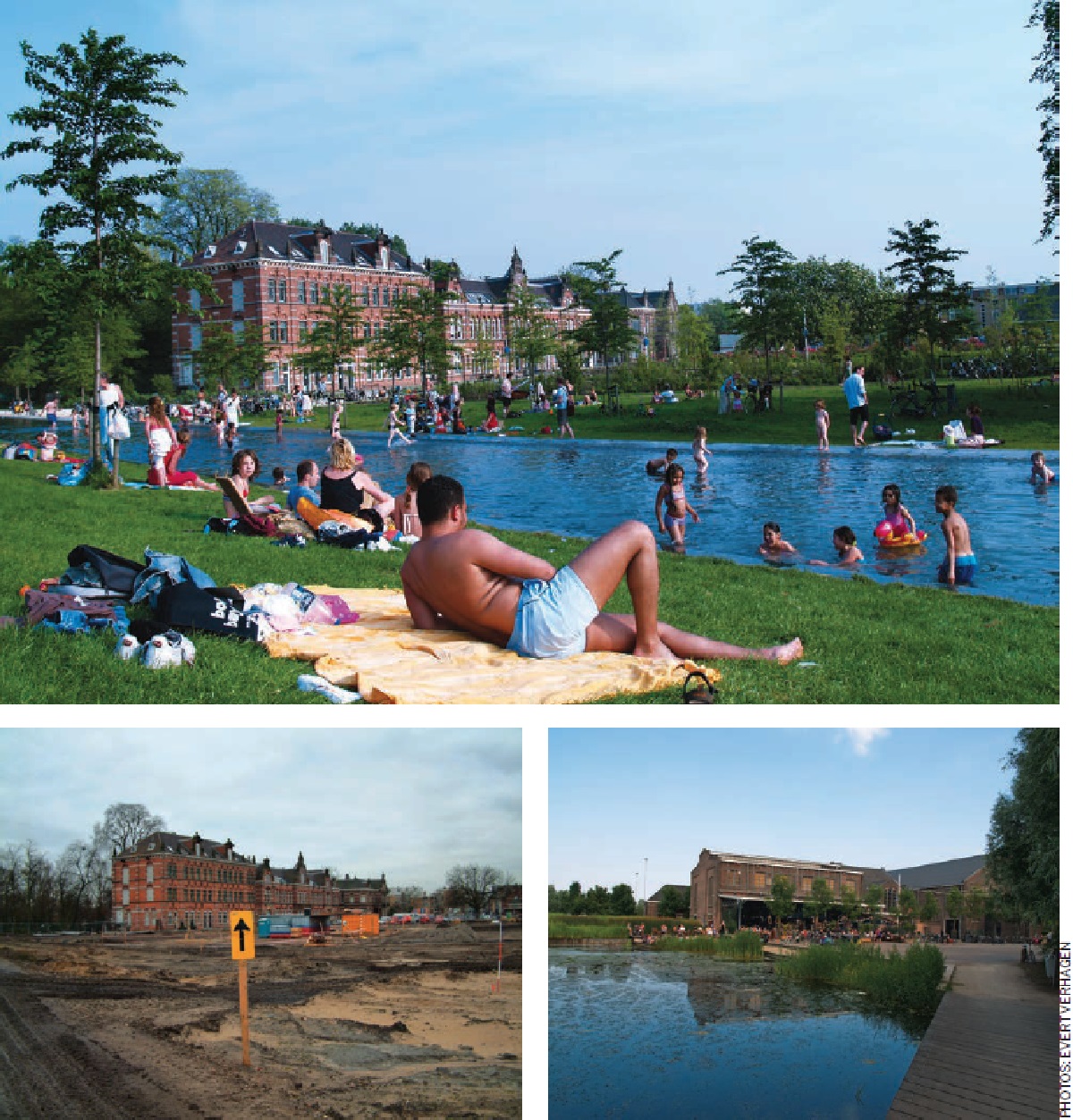
Another example of imaginative, adaptive reuse is the Westergasfabriek Park in Amsterdam. The Western Gas factory was constructed in 1885 to produce gas from burning coal for street lighting. In the mid-20th century, gas production was gradually reduced as natural gas became available and the factory finally closed in 1967. The territory was heavily polluted, making it difficult to find a new purpose for the area. Only in 1992 was it handed down by the municipal energy company to the city. The development team, led by Evert Verhagen, started comprehensive research, while developing temporary cultural functions and encouraging citizen participation. Verhagen explains: “The only thing that really counts is the future use of the heritage sites. That’s essential. Because of the possibility to experiment for several years, we learned what to do and what not to do, we understood how the site and the buildings really work. We could use everything we learned in our strategies for renovation and regeneration. I am sure that the present success of Culturepark Westergasfabriek is completely based on this.”
Temporary uses attracted the public as well as businesses to the forgotten facilities and helped to raise funds necessary for such an ambitious revitalization. Cleaning up the site’s soil, covering large parts of it with protective layers, creating a ‘roof-garden’ over them and restoring the landmarks all required continuous readjusting of the strategy and an open mind. Each of the industrial buildings now has tenants and is an art venue. American landscape architect Kathryn Gustafson won an international competition and transformed this severely damaged land into the most popular urban oasis in Amsterdam. Now the Westergasfabriek is regarded as a case-study model for redevelopment, far beyond Netherlands’ borders.
Parks instead of railroads
Railroad infrastructure with miles of tracks, warehouses and loading backyards covered significant areas in cities throughout the industrial era. However, new means of transportation made large portions of these obsolete and led to their abandonment. Peter Latz was experimenting with the ‘greening’ of the railways in his Duisburg Nord Park, but this was a part of the natural environment far away from urban density.
The first attempt to convert a railroad into a park within a city was the Promenade Plantée in Paris – a three-mile green belt along the old Vincennes Railway line. The park goes up and down following the former elevated railway viaduct, now Viaduc des Arts, while its arches accommodate arts and crafts shops. Inaugurated in 1993, the parkway was designed by landscape architect Jacques Vergely and architect Philippe Mathieux.
Another variation of this idea became much more famous all over the world: The High Line Park in New York by Diller Scofidio + Renfro Architectural Group. Previously known for their avant-garde conceptual projects, such as the Blur Cloud on the Swiss lake Neuchatel, they have proven to be able to work with the historical urban fabric and pay attention to every detail. The elevated West Side Line in the Lower West Side of Manhattan was opened in 1934, allowing trains to load and unload their cargo directly inside factories and warehouses. This riveted-steel structure was a source of terrible noise and pollution during the day and night. It remained structurally sound when in the mid-1980s, a group of property owners lobbied for the demolition of the entire viaduct. Residents and artists soon formed a group called ‘Friends of the High Line’ to preserve and reuse this piece of industrial heritage as public open space. The revitalization project was implemented in three stages from 2006 till 2014. ‘Diller Scofidio + Renfro’ claim to be inspired by the ‘melancholic, unruly beauty of this post-industrialization ruin’ and to fill it with a diversity of sunny, shady, wet, dry, windy and sheltered spaces. A concept of ‘agri-tecture’ brought attention to the original landscape that grew on the disused tracks, with drought-tolerant wild grasses, shrubs and rugged trees. The Dutch landscape designer Piet Oudolf has introduced 210 species of plants, mostly American natives, to form gentle wild-like vegetation here.
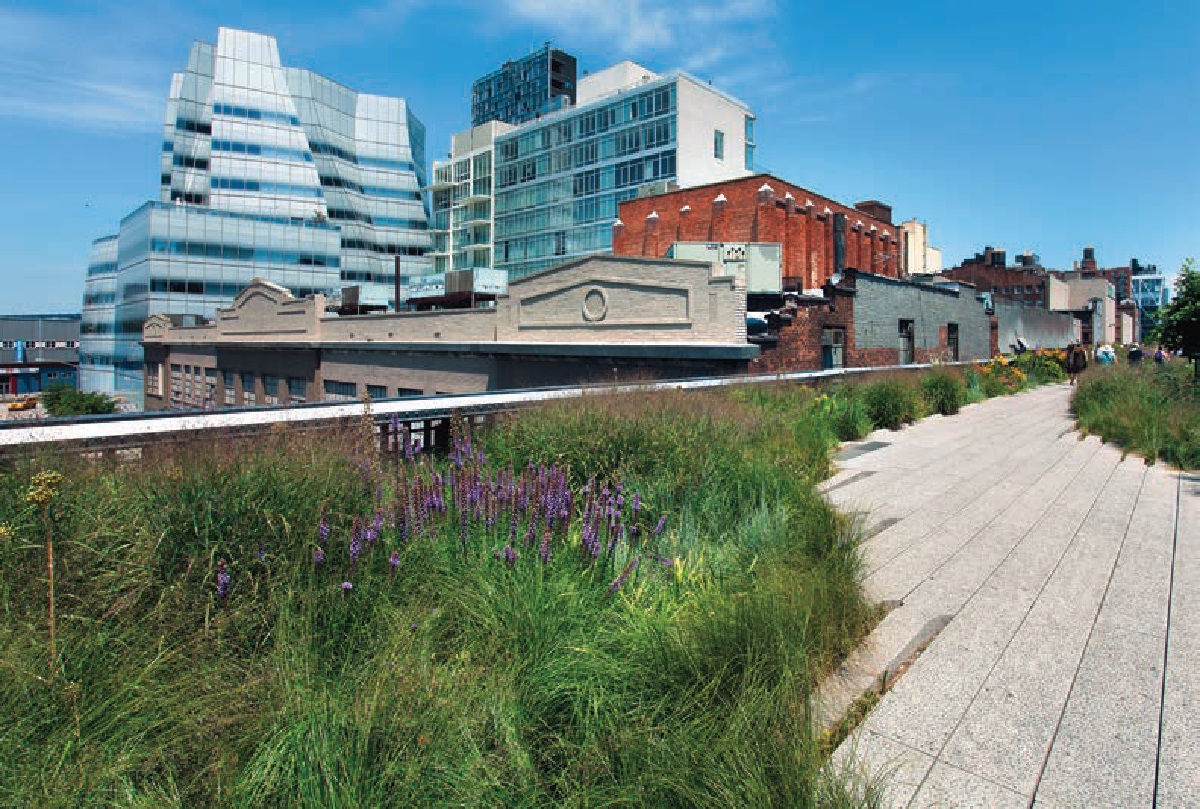
Photo: Vladimir Paperny
The recycling of the railway into an urban park has brought on the revitalization of Chelsea, the project has spurred real estate development in the neighborhood and increased real estate values and prices along the route.
Millions of visitors and the resultant revenue from them made the High Line Park a desirable model for gentrification in other places.
The next was the Bloomingdale Line running east-west on the northwest side of Chicago. It was recently converted into a three-mile-long elevated linear park with bicycle facilities by a multi-disciplinary team led by Collins Engineers.
Another former railyard territory near Lake Michigan shoreline in Chicago was transformed into Millennium Park. Structurally, the park is a shell over an underground parking structure designed by Skidmore, Owings & Merrill. It includes such iconic landmarks as Frank Gehry’s Jay Pritzker orchestra pavilion and BP Pedestrian Bridge and ‘Cloud Gate’, a mirror-steel sculpture by Anish Kapoor. A very special part of Millennium Park is a five-acre rooftop Lurie Garden designed by Kathryn Gustafson and Piet Oudolf. It is a vibrant and poetic combination of perennials, bulbs, grasses, constantly changing through all four seasons and attracting birds, butterflies and bees.
Millennium Park was created with a great amount of sponsorship. Now it pays the city back; the community surrounding Millennium Park has become one of the most fashionable and has the most expensive residential addresses in Chicago.
Parks instead of cities
The situation when several city blocks are being demolished to make room for a park is not very typical. One of the few well-known cases is Kowloon Walled City in Hong Kong – a high density slum within an ancient Chinese military fort; home to more than 30,000 residents, which was torn down in 1993. Poorly managed by the government and the police, Kowloon was a ‘city within a city’ with its own hierarchy, mythology, history and crime. It was replaced by a highly traditional Kowloon Walled City Park celebrating the style of the early Qing Dynasty – an obvious attempt to erase any memory of the illegal years of the Kowloon settlement.
Some parallels may be found between Kowloon and Zaryadye Park, in the Russian capital, currently under construction. Zaryadye is a territory next to the Moscow Kremlin on the bank of the Moskva River. Since the 12th century, this was one of first inhabited areas in the city and once a vibrant trade district with a multinational community. But it became derelict at the beginning of the 20th century.
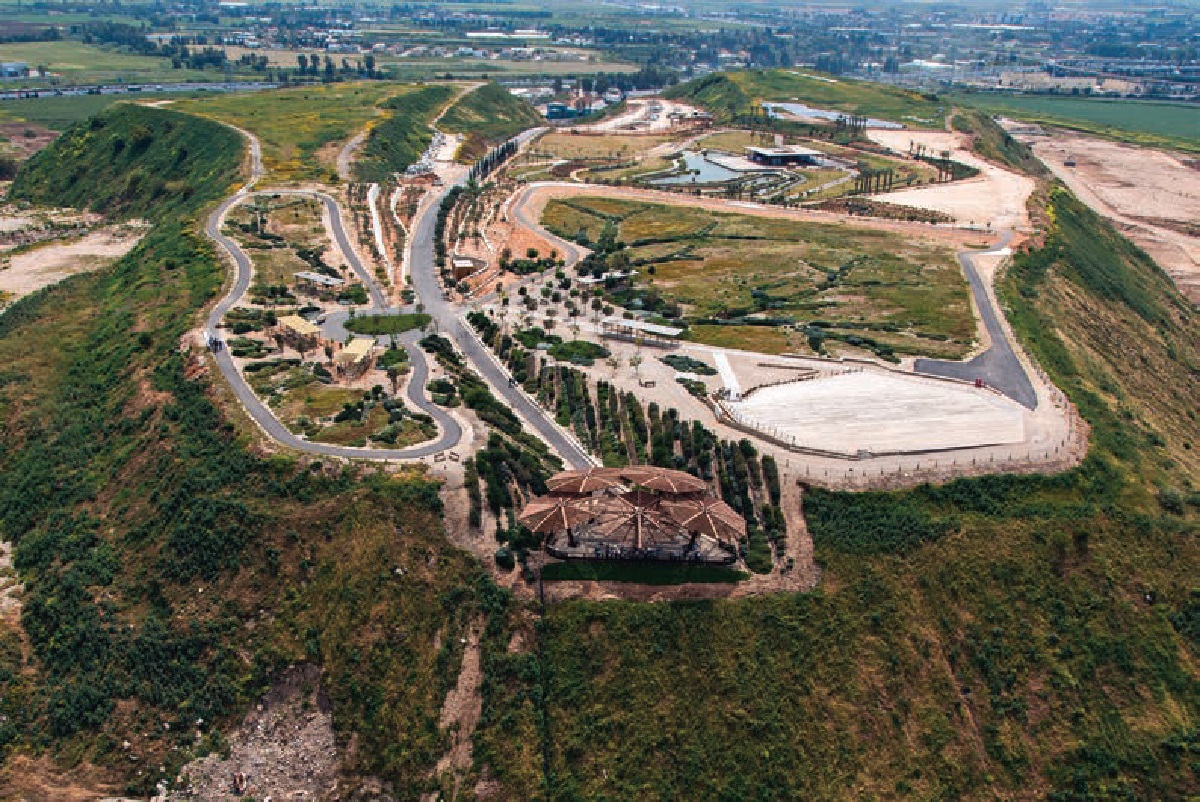
Photo: Duby Tal, Albatros
Zaryadye was demolished in the 1930s to build one of Stalin’s skyscrapers, but the construction was slowed down, first by World War II and then completely stopped after Stalin’s death (1953). In 1964, Hotel Russia, the largest hotel in Europe, was built on the abandoned site. In 2006, the hotel with 4000 rooms was dismantled to set up new commercial development, but the plan was canceled after the 2008 economic crisis. The vacant site became the most expensive brownfield in the country. Over the years there have been numerous scenarios for utilization of the site.
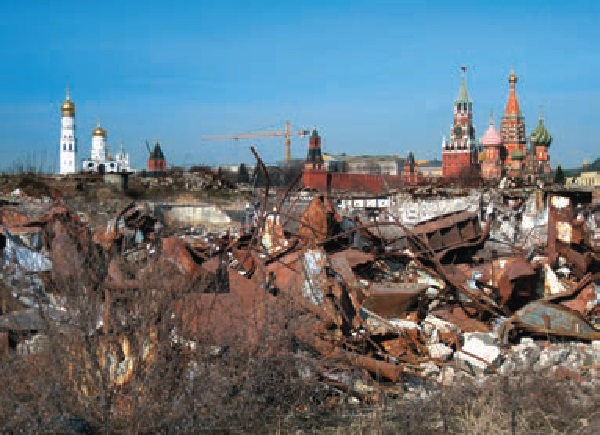
Photo: Marina Khrustaleva
Four years later, President Putin unexpectedly suggested converting the former Hotel Russia land into a park. An international competition was held in 2013 attracting such architectural stars as West 8, MVRDV, Turenscape and Gustafson & Porter. The consortium led by ‘Diller Scofidio + Renfro’ emerged victorious. Their proposal was based on Wild Urbanism. They presented a daring idea: to recreate four Russian landscape typologies: tundra, steppe, forest and wetland simultaneously in a single park, demonstrating respect for the built heritage of Moscow. All the interior spaces were to be hidden in the folds of landscape and under the translucent biomorphic ‘core’; the paver system was intended to make the park ‘pathless’, allowing any route to be taken through the hybrid urban-natural environment. Petr Kudryavtsev from Citymakers, the Russian arm of the consortium, explains their approach:
“Zaryadye is not a simple park – it’s a hybrid public space for tough climates. It’s more urbanized than an ordinary city park, but still calm and meditative. This is a good reference for other Russian cities, especially those with harsh weather conditions, to have a special central social place, where people can meet, or be alone with themselves, but still feel a part of culture, nature and society.”
Unfortunately, as with many good beginnings in Russia, Zaryadye Park is now out of control of its creators. ‘The Diller Scofidio + Renfro’ consortium was awarded for its concept and later substituted with subcontractors. It’s obvious now, that they extended the underground concrete structure of the park to include more parking and commercial functions. We should be able to evaluate the result of this complex development in the Fall of 2017, when Zaryadye Park is completed.



Comments (0)